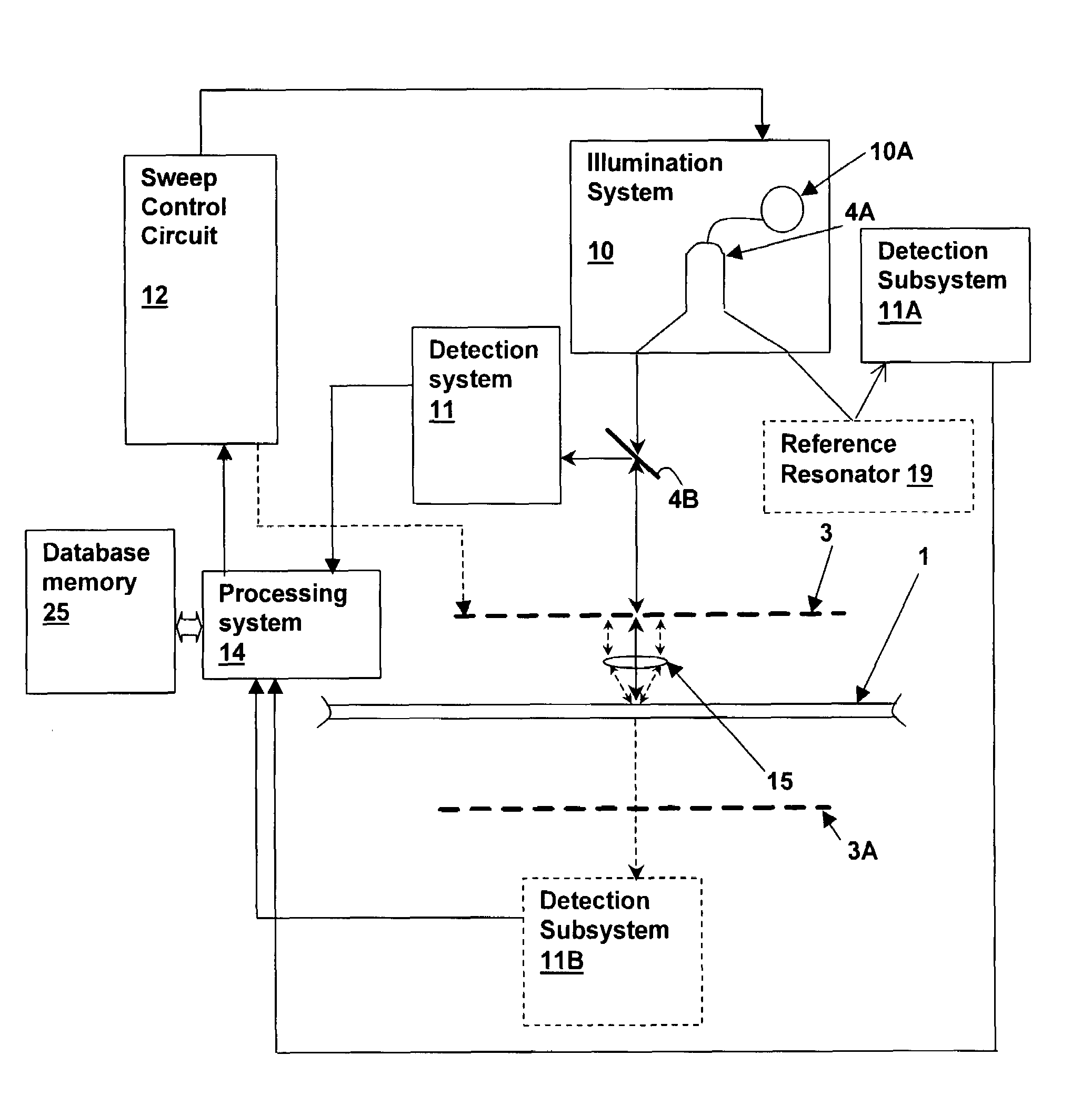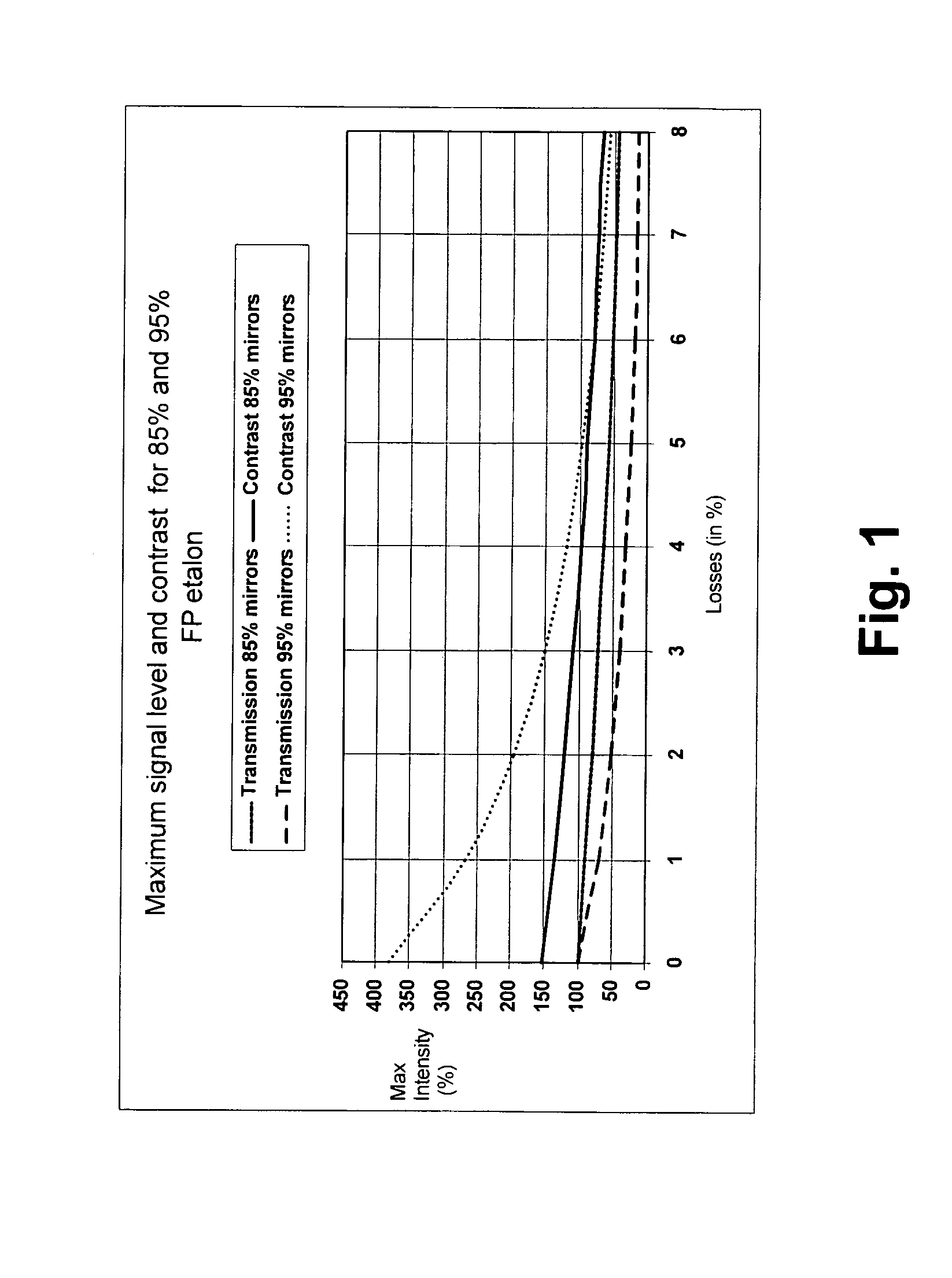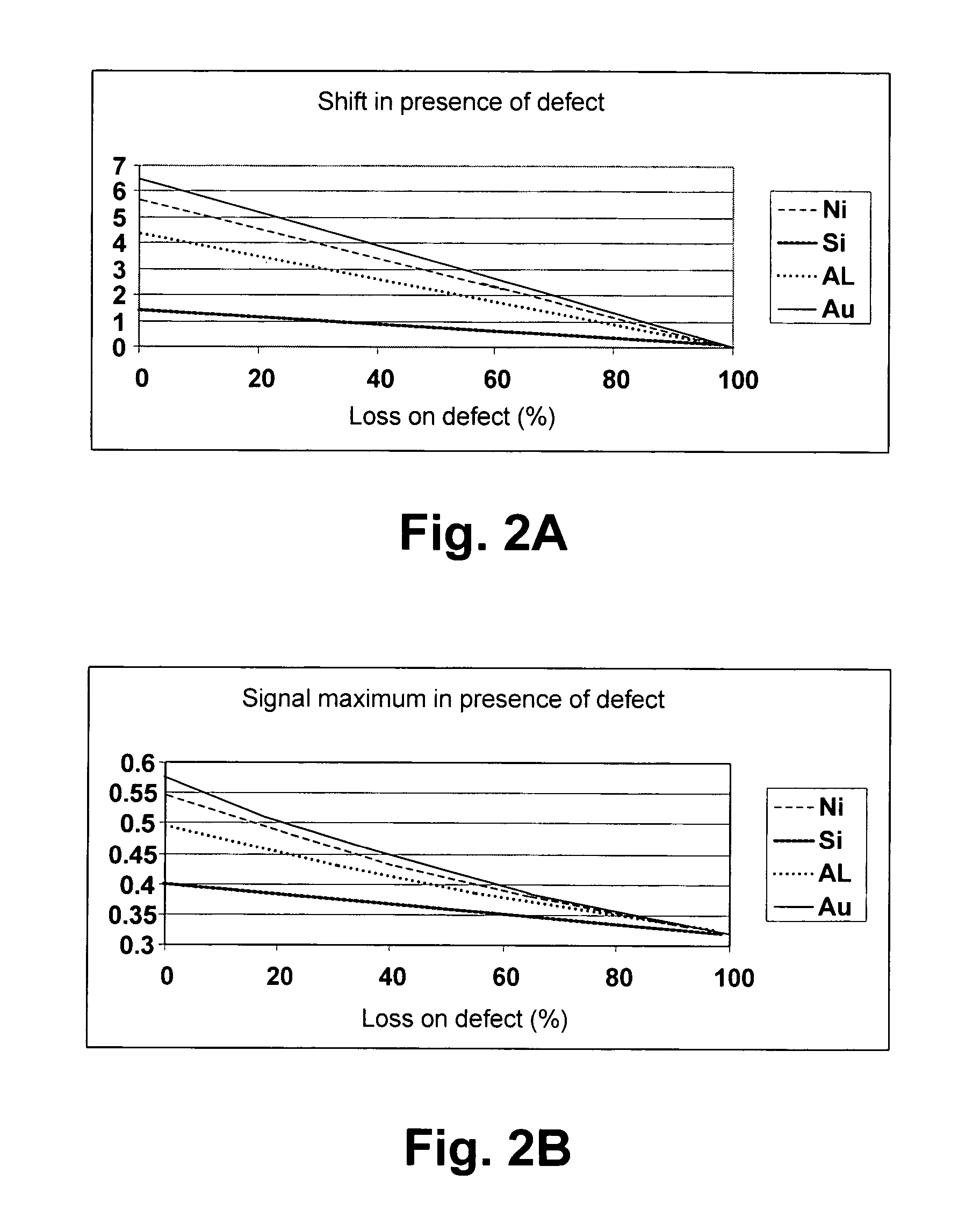Resonator method and system for distinguishing characteristics of surface features or contaminants
a surface feature and resonance technology, applied in the field of optical systems, can solve the problems of scatterometer not revealing scatterometer not providing sufficient measurement energy to measure a very small isolated artifact,
- Summary
- Abstract
- Description
- Claims
- Application Information
AI Technical Summary
Benefits of technology
Problems solved by technology
Method used
Image
Examples
Embodiment Construction
[0025]The above-incorporated parent application describes a dual resonator swept-wavelength technique and system that can be used to improve the performance of various resonator-enhanced optical systems. In general, the parent application, its parent applications and the above-incorporated co-pending U.S. patent applications disclose a variety of techniques and systems using a resonator that enhance the measurement of optical properties of a surface.
[0026]However, up to this point, it has not been possible to reliably distinguish between artifact types or between artifacts and surface features for small artifacts disposed on or just below a surface under measurement (surface of interest). While any artifact or feature present on or in a surface of interest will generally change the optical properties of the surface in the region of the artifact, the systems disclosed in the above-incorporated patent applications measure only an intensity profile as the illumination beam is scanned o...
PUM
| Property | Measurement | Unit |
|---|---|---|
| reflectivity | aaaaa | aaaaa |
| reflectivity | aaaaa | aaaaa |
| wavelength | aaaaa | aaaaa |
Abstract
Description
Claims
Application Information
 Login to View More
Login to View More - R&D
- Intellectual Property
- Life Sciences
- Materials
- Tech Scout
- Unparalleled Data Quality
- Higher Quality Content
- 60% Fewer Hallucinations
Browse by: Latest US Patents, China's latest patents, Technical Efficacy Thesaurus, Application Domain, Technology Topic, Popular Technical Reports.
© 2025 PatSnap. All rights reserved.Legal|Privacy policy|Modern Slavery Act Transparency Statement|Sitemap|About US| Contact US: help@patsnap.com



